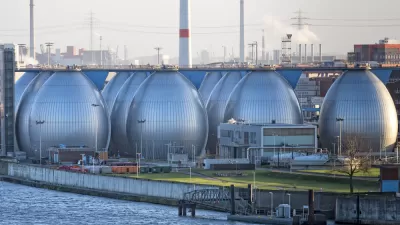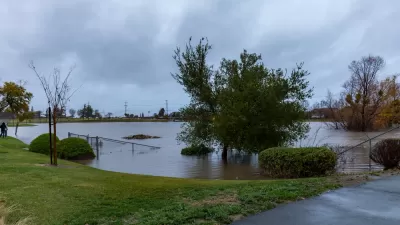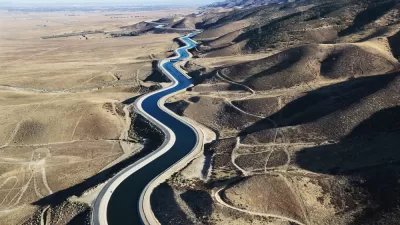In 2017, the Southern California city no longer had to be concerned about water quantity, but was plagued by issues of water quality.

“In 2017, San Diego stopped worrying so much about whether it would have enough water and started worrying about what was in the water,” writes Ry Rivard of the Voice of San Diego.
These worries, he continues, were lead and sewage; both represent systemic issues.
Lead was first. In January, the city found that in a significant number of its schools, old plumbing was leaking lead into the water, exposing not just a problem with the water, but a problem with how funding is distributed.
“At San Diego Unified in particular, the plumbing problems seemed to highlight how school districts and interest groups head-fake voters during campaigns for school construction bonds. Voters had been repeatedly persuaded to raise their own taxes to pay for school improvements. Then officials spent that money on things other than essential infrastructure.”
The city and state began work on a plan for school plumbing, but the next month, millions of gallons of sewage tumbled into the Tijuana River and across the border into San Diego; spilled sewage may or may not be linked to the city’s Hepatitis A outbreak.
The sewage probably is not at all new, in fact, Rivard writes, “Because of Tijuana River sewage spills, the San Diego City Council has had a state of emergency in effect since 1993–a real misuse of the word ‘emergency.’”
Of course, just because the historic California drought has subsided, it’s not as if San Diego can stop worrying about drought, and it’s not as if they haven’t.
But Rivard’s point is that the water quality issues are interfering with plans for the water quantity issues.
“Now, even new water supply projects are imperiled by the sewage crisis. For years, the Otay Water District had been talking about pitching in to fund a desalination plant in Mexico to help supply water to the United States. But this spring, David Gibson, executive director of the San Diego Regional Water Quality Control Board, said he worried a new desalination plant could siphon money from the already strained Tijuana sewer system.”
“The attention on water quality could quickly go away if the state returns to drought conditions, but for now,” Rivard concludes, “the drought emergency is over in San Diego but worries about water quality continue.”
FULL STORY: San Diego Went From Worrying About Having Enough Water to What’s in it

Alabama: Trump Terminates Settlements for Black Communities Harmed By Raw Sewage
Trump deemed the landmark civil rights agreement “illegal DEI and environmental justice policy.”

Study: Maui’s Plan to Convert Vacation Rentals to Long-Term Housing Could Cause Nearly $1 Billion Economic Loss
The plan would reduce visitor accommodation by 25% resulting in 1,900 jobs lost.

Planetizen Federal Action Tracker
A weekly monitor of how Trump’s orders and actions are impacting planners and planning in America.

Federal Homelessness Agency Places Entire Staff on Leave
The U.S. Interagency Council on Homelessness is the only federal agency dedicated to preventing and ending homelessness.

Restoring Northern India’s Himalayan ‘Water Temples’
Thousands of centuries-old buildings protect the region’s natural springs and serve as community wells and gathering places.

Milwaukee to Double Bike Share Stations
Bublr Bikes, one of the nation’s most successful, will add 500 new e-bikes to its system.
Urban Design for Planners 1: Software Tools
This six-course series explores essential urban design concepts using open source software and equips planners with the tools they need to participate fully in the urban design process.
Planning for Universal Design
Learn the tools for implementing Universal Design in planning regulations.
Caltrans
Smith Gee Studio
Institute for Housing and Urban Development Studies (IHS)
City of Grandview
Harvard GSD Executive Education
Toledo-Lucas County Plan Commissions
Salt Lake City
NYU Wagner Graduate School of Public Service





























